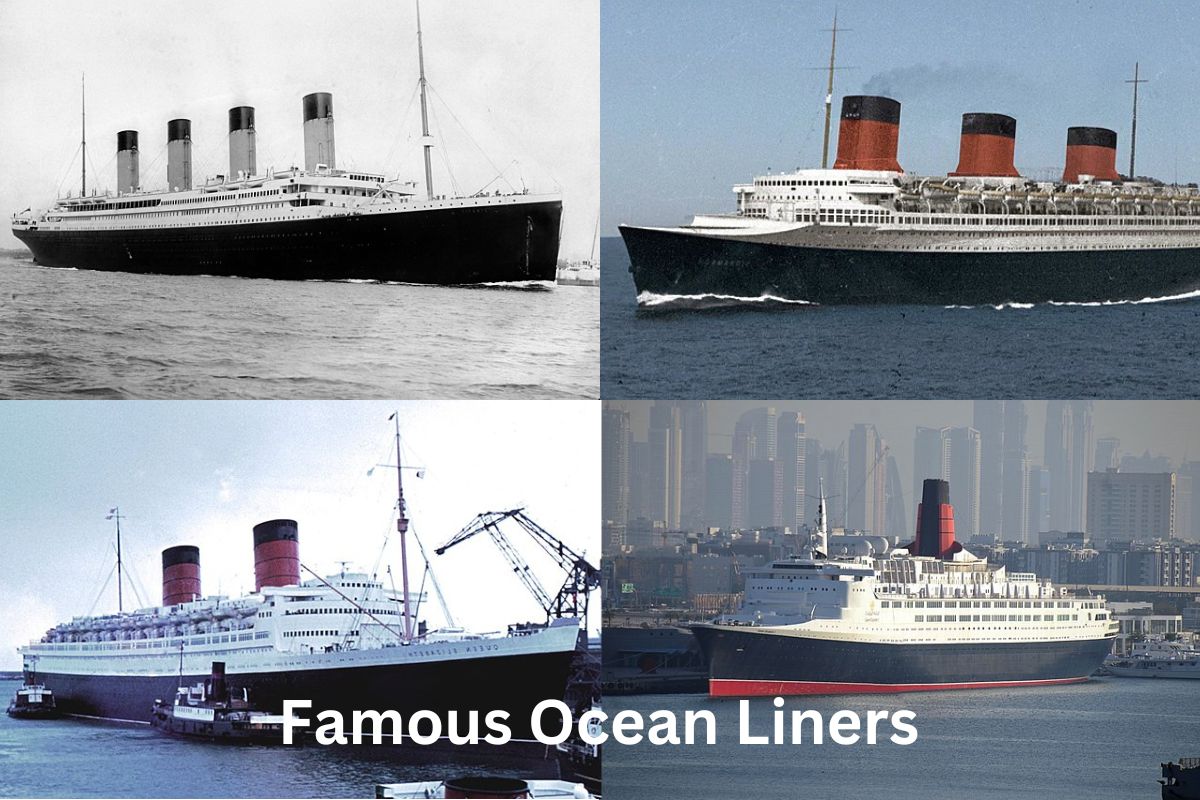Ocean liners are enormous, opulent ships built to ferry people across the world’s oceans. Before to the invention of air travel, they were the principal form of transportation for people going large distances over the sea.
Numerous famous ocean liners have left an indelible impression on history due to their enormous size, lavish amenities, and terrible occurrences.
The RMS Titanic, which tragically sank on its maiden voyage in 1912, the RMS Queen Mary, which served as a troopship during World War II and is now a popular tourist attraction in California, and the SS United States, which was once the fastest ocean liner in the world and is now undergoing restoration in Philadelphia, are among the most famous ocean liners.
The RMS Queen Elizabeth 2, which served as a luxury liner for nearly three decades, the SS Normandie, which was the largest and most opulent liner of its day, and the SS Andrea Doria, which sadly sank in 1956 after colliding with another ship, are also significant ocean liners.
These great ocean liners not only represented the pinnacle of luxury and technology at the time, but they also have a tremendous historical significance as icons of the golden age of ocean travel.
Famous Ocean Liners
1. RMS Titanic

The Titanic was a British passenger ship that sank on April 15, 1912, in the North Atlantic Ocean after striking with an iceberg on her maiden journey from Southampton, UK, to New York City, USA.
The Titanic was designed to be one of the largest and most luxury ships of the day, with swimming pools, Turkish baths, and a grand staircase. The calamity struck the ship barely four days into its journey.
The Titanic carried nearly 2,200 passengers and crew members, including some well-known commercial, political, and entertainment luminaries. The Titanic’s collision with the iceberg caused significant damage, and the ship was clearly sinking. Despite attempts to preserve it, the ship sank, killing approximately 1,500 people.
The Titanic’s sinking became a global calamity that captivated the public imagination. The catastrophe prompted a flurry of inquiries and investigations, including one by the United States Senate, which resulted in major changes to marine safety rules.
The Titanic’s legacy goes on in popular culture, with numerous books, films, and television productions based on the disaster. The Titanic is still remembered as one of history’s most infamous and terrifying ships, a tribute to the frailty of human life and the perils of the open sea.
2. RMS Queen Mary
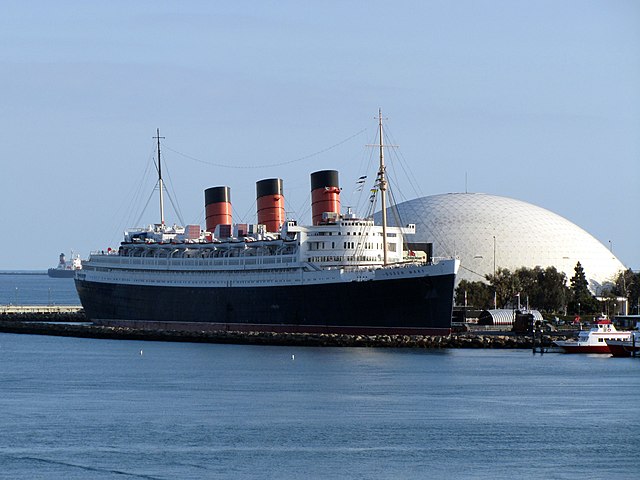
The RMS Queen Mary was a significant ocean liner that primarily patrolled the North Atlantic between 1936 and 1967. The ship was one of the most sumptuous and technologically advanced liners of its day, and it became an icon of British maritime history almost immediately.
When it was launched in 1934, the RMS Queen Mary was one of the largest passenger liners of its day, measuring over 310 meters long and weighing over 80,000 tons. The ship could accommodate over 2,000 passengers and had amenities like swimming pools, a theater, and a large ballroom.
The British government commandeered the RMS Queen Mary during WWII and used it to transport troops and supplies across the Atlantic. To avoid detection by German U-boats, the ship was renamed “Grey Ghost” and painted gray.
The ship played an important role in the war effort, transporting nearly 800,000 troops and earning the nickname “The Mightiest Ship in the World.”
The RMS Queen Mary resumed commercial service after the war and remained a popular choice for transatlantic passengers. However, as commercial air travel became more popular, the ship’s appeal declined, and it was decommissioned in 1967.
The RMS Queen Mary is currently a museum and hotel in Long Beach, California, and represents the golden period of ocean liners as well as British maritime history.
3. SS United States

The SS United States is a 1950s-built American ocean liner notable for its speed and creative design. It was first introduced in 1952 and rapidly became a symbol of American pride and technological advancement.
The SS United States was built to be the world’s fastest and safest ocean liner, capable of exceeding 35 knots thanks to its strong engines and lightweight aluminum structure.
Its sleek, modernist design and luxury internal facilities made it a favorite choice among celebrities and dignitaries, and it established numerous transatlantic speed records while in service.
Following more than a decade of service as a passenger liner, the SS United States was retired in 1969 and temporarily served as a stationary cruise ship before being laid up in a Philadelphia pier.
Despite numerous attempts to rehabilitate and maintain the ship over the years, it languished in ruin until it was purchased by a non-profit organization in 2011 with the purpose of restoring it to its former splendor.
Today, the SS United States is a potent symbol of American invention and engineering prowess, and its restoration is considered as a testimony to ocean liners’ long legacy as cultural icons.
It is intended that the ship will one day be open to the public as a museum and cultural center highlighting the best of mid-century American design and engineering.
4. RMS Queen Elizabeth 2

The Queen Elizabeth 2, or QE2, was a famous ocean liner that operated between 1969 and 2008. The liner was one of the most opulent and famous of its time, and it was significant in British maritime history.
When it was launched in 1967, the QE2 was one of the largest passenger liners of its day, measuring over 293 meters long and weighing over 70,000 tons. The ship had a capacity of over 2,500 guests and included amenities such as swimming pools, a casino, and a theater.
During its service, the QE2 was used for both commercial and military objectives. During the 1982 Falkland War, the ship served as both a troop transport and a royal yacht for Queen Elizabeth II and the Royal Family.
After 40 years of service, the QE2 was retired in 2008 and sold to a Dubai-based company for use as a hotel and entertainment venue. However, plans for the ship’s rehabilitation and restoration have been postponed, and the QE2’s future is undetermined.
Today, the QE2 remains an emblem of British maritime history and the golden period of ocean liners. The ship’s legacy lives on in the memories of those who sailed on it, and it continues to surprise and enchant those who appreciate its history and magnificence.
5. SS Normandie
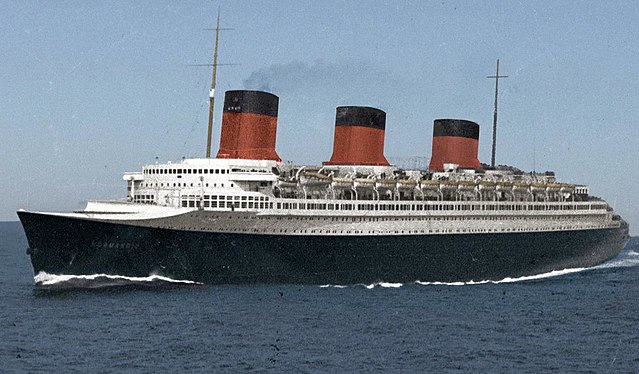
The SS Normandie was a 1930s-era French ocean liner notable for her opulent facilities and creative design. When it was first introduced in 1935, it rapidly became a symbol of French elegance and craftsmanship.
The SS Normandie was the largest and fastest liner of its time, measuring over 1,000 feet long and capable of speeds exceeding 30 knots. Its stunning design featured a sleek, contemporary facade and a rich Art Deco interior equipped with luxurious amenities like a swimming pool, movie theater, and large dining room.
During WWII, the US Navy seized the SS Normandie and renamed it the USS Lafayette, where it served as a troopship. Nevertheless, a fire broke out during the ship’s refit, causing substantial damage.
Due to the enormous expense of repairs and the waning popularity of ocean liners, the decision was made to demolish the ship while it was being restored.
Despite its brief service, the SS Normandie remains one of the most iconic ocean liners of all time, embodying the pinnacle of luxury and innovation in ocean travel. Its heritage inspires designers and architects today, and its influence may be seen in the world of luxury ocean liners and cruise ships.
6. RMS Lusitania
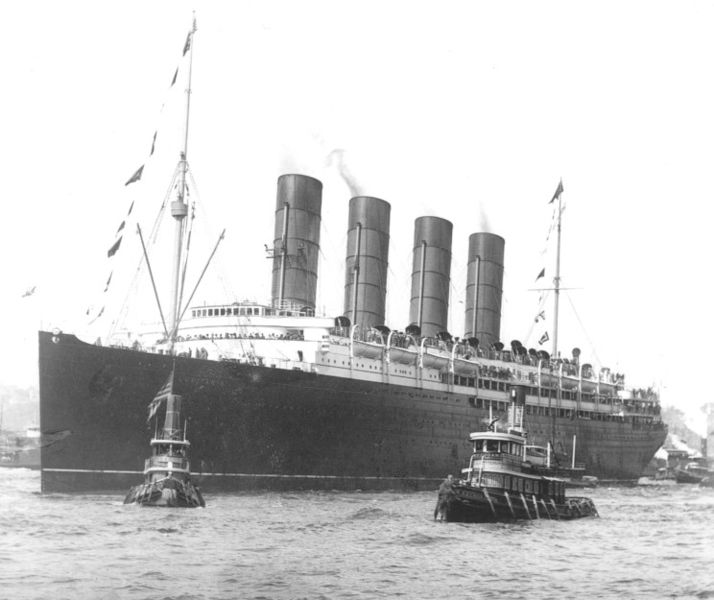
During World War I, the Lusitania was a British ocean liner that was torpedoed and lost by a German U-boat on May 7, 1915.
The ship was sailing from New York to Liverpool when it was hit by a single torpedo launched by the German submarine U-20, resulting in a devastating explosion that killed 1,198 passengers and crew members.
One hundred and twenty Americans were among those killed, heightening popular fury against Germany and pushing the US closer to war.
The sinking of the Lusitania was a watershed point in the war, with far-reaching consequences for public opinion. It was widely condemned as a heinous act of war against civilians, and those urging the US to join the Allies used it as a rallying cry.
The disaster also had long-term implications for maritime warfare, prompting changes in ship design, the deployment of convoy systems, and other initiatives to protect civilian vessels.
The wreck of the Lusitania was discovered in 1935 off the coast of Ireland, and attempts to analyze and document the ship’s remains have persisted to this day. The sinking of the Lusitania remains a terrible and significant event in both World War I and maritime disaster history.
7. SS Andrea Doria
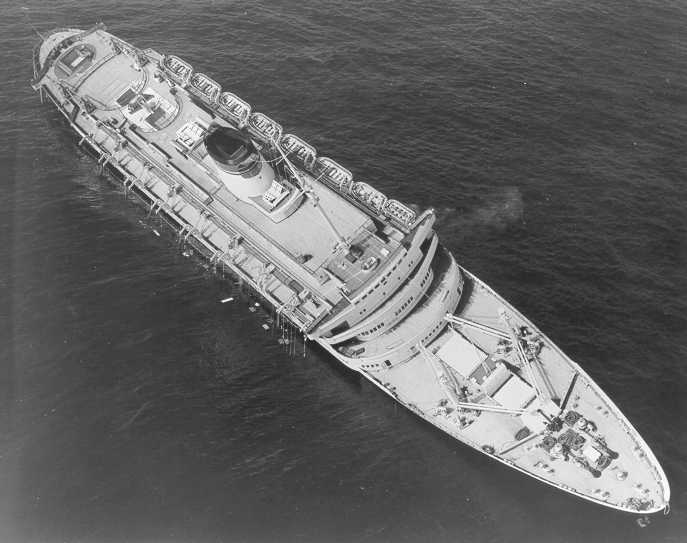
The Andrea Doria was an Italian luxury liner that sank off the coast of Massachusetts on July 25, 1956, after colliding with the Swedish ship Stockholm. The Andrea Doria crashed in deep fog, killing all 46 people on board.
The sinking of the Andrea Doria was one of the worst maritime disasters in American history, and it got widespread media coverage at the time. The ship was carrying many wealthy and famous passengers, including movie stars and European royalty, which added to the tragedy and gained national attention.
Despite the severity of the collision, the majority of passengers and crew on board the Andrea Doria were able to evacuate safely thanks to the quick response of nearby ships and the coast guard.
Because many individuals were saved by newly constructed life rafts and life jackets, the catastrophe also highlighted technological advancements and safety procedures in the maritime sector.
The Andrea Doria wreck is still a popular site for deep-sea divers today due to its impressively undamaged state and location in a relatively shallow region of the Atlantic. The sinking of the Andrea Doria is known as a terrible occurrence in the history of ocean liners.
8. SS France
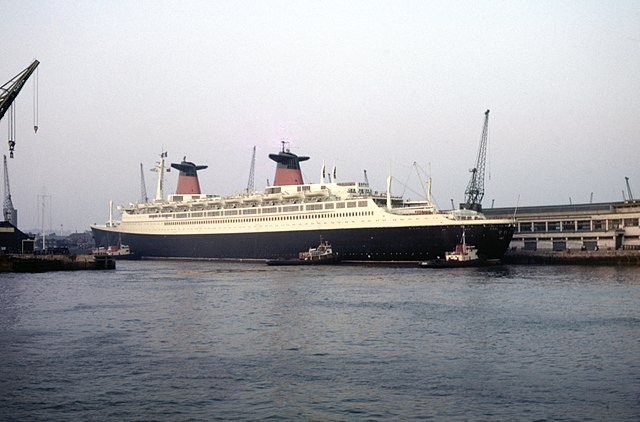
The SS France was a French ocean liner that debuted in 1960 and was recognized for its cutting-edge design and opulent facilities. It was the last big ocean liner built in France, and it was the largest and fastest liner of its day, capable of speeds of more than 30 knots.
The SS France was built to embody modern French elegance and flair, with a sleek, streamlined exterior and a rich interior replete with cutting-edge facilities including air conditioning, an indoor swimming pool, and a cinema. It immediately became a popular choice for celebrities and wealthy travelers due to its superb service and attention to detail.
Following more than a decade of service as a passenger liner, the SS France was retired in 1974 and briefly utilized as a cruise ship before being sold to a Norwegian cruise line in 1979. The ship was renamed the SS Norway and underwent considerable renovation and modernisation to meet modern standards.
The SS Norway was a cruise ship for more than two decades before being discontinued in 2003 due to safety issues. After numerous attempts to find a new owner and save the ship, it was eventually scrapped in 2008.
Despite its brief service, the SS France has become an iconic symbol of French luxury and ingenuity, and its legacy continues to influence designers and architects today. Its influence can still be felt in the world of luxury ocean liners and cruise ships, and it attests to ocean travel’s ongoing popularity as a cultural symbol.
9. SS Rotterdam
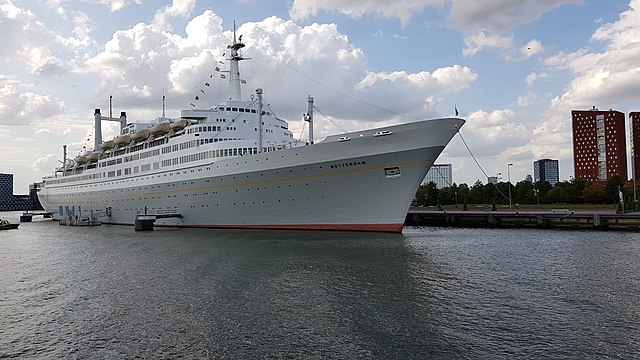
The SS Rotterdam is a 1958 Dutch ocean liner notable for its exquisite design and opulent amenities. It was built as the Holland America Line’s flagship and served as a passenger liner between Rotterdam and New York for nearly three decades.
The SS Rotterdam was meant to embody modern Dutch elegance and flair, with a sleek, modernist façade and an opulent interior replete with cutting-edge facilities including air conditioning, a swimming pool, and a movie theater. It immediately became a popular choice among travelers, because to its exceptional service and attention to detail.
Following more than three decades of service as a passenger liner, the SS Rotterdam was retired in 1997 and temporarily utilized as a hotel ship in Rotterdam.
However, due to high maintenance expenses and a downturn in ocean liner popularity, it was eventually sold to a new owner and underwent substantial rehabilitation and modernization.
The SS Rotterdam is now a museum and hotel ship that showcases the best of Dutch design and engineering from the mid-twentieth century.
Visitors can visit the ship and enjoy the lavish amenities that made it a popular option among tourists during its time in service; it also serves as a potent representation of ocean liners’ ongoing popularity as cultural icons.
10. RMS Mauretania
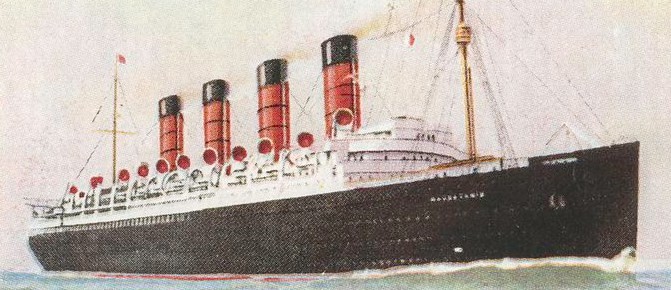
The RMS Mauretania was a British ocean liner built in 1906 that was famed for its speed and elegance. It was built for the Cunard Line and served as a passenger liner between Liverpool and New York for nearly two decades.
The RMS Mauretania was supposed to be the most luxurious and fastest liner of its time, capable of achieving speeds of more than 25 knots because to its strong engines and clever design.
It was popular among wealthy visitors due to its sleek, streamlined design and opulent interior, and it was recognized for its outstanding service and attention to detail.
The RMS Mauretania was converted into an armed merchant cruiser during World War I and saw combat in the North Sea. It was reinstated to passenger service after the war and continued to operate as a liner until 1934, when it was withdrawn and subsequently demolished.
Despite its brief service, the RMS Mauretania has become an iconic symbol of British engineering and design, and its legacy continues to influence designers and architects today. Its influence can still be felt in the world of luxury ocean liners and cruise ships, and it attests to ocean travel’s ongoing popularity as a cultural symbol.
11. MS Queen Elizabeth
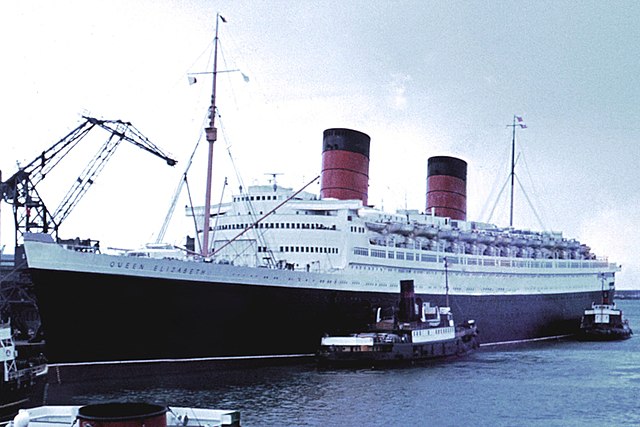
The MS Queen Elizabeth, a British ocean liner launched in 1938, was recognized for her opulent facilities and revolutionary design. It was built for the Cunard Line and served as a passenger liner between Southampton and New York for nearly two decades.
The MS Queen Elizabeth was built to be the pinnacle of British elegance and style, with a sleek, modernist façade and a magnificent interior packed with cutting-edge facilities like air conditioning, a swimming pool, and a big ballroom. It immediately became a popular choice among travelers, because to its exceptional service and attention to detail.
The MS Queen Elizabeth was converted into a troopship during WWII and saw service in the Mediterranean and the Pacific. It was reinstated to passenger service after the war and continued to operate as a liner until 1968, when it was withdrawn and subsequently scrapped.
Despite its brief service, the MS Queen Elizabeth has become an iconic symbol of British luxury and innovation, and its legacy continues to inspire designers and architects today.
Its influence can still be felt in the world of luxury ocean liners and cruise ships, and it attests to ocean travel’s ongoing popularity as a cultural symbol.
12. SS Canberra
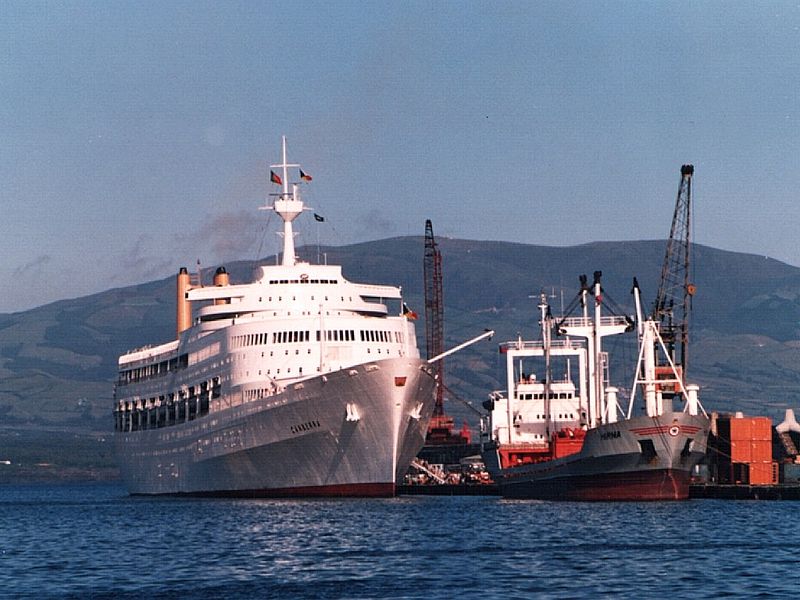
The SS Canberra was a 1960s British ocean liner famed for its exquisite design and opulent amenities. It was built for the P&O Line and served as a passenger liner between Southampton and Australia for nearly two decades.
The SS Canberra was built to embody modern British elegance and flair, with a sleek, modernist façade and an opulent interior replete with cutting-edge facilities like as air conditioning, a swimming pool, and a cinema. It immediately became a popular choice among travelers, because to its exceptional service and attention to detail.
After more than two decades of service as a passenger liner, the SS Canberra was retired in 1997 and temporarily repurposed as a floating hotel in Gibraltar. However, because to high maintenance expenses and a downturn in ocean liner popularity, it was eventually sold to a new owner and demolished in 1998.
Despite its brief service, the SS Canberra has become an iconic symbol of British luxury and innovation, and its legacy continues to influence designers and architects today. Its influence can still be felt in the world of luxury ocean liners and cruise ships, and it attests to ocean travel’s ongoing popularity as a cultural symbol.
13. SS Oriana
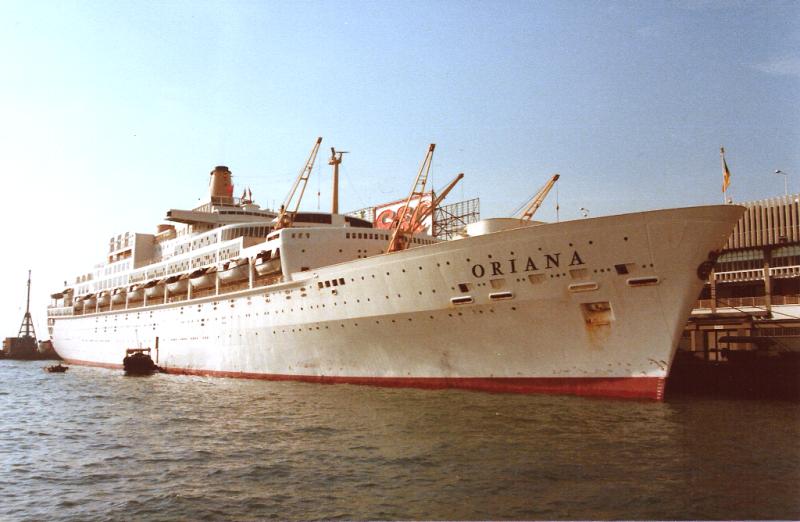
The SS Oriana was a 1960s British ocean liner famed for her exquisite design and opulent amenities. It was built for the P&O Line and served as a passenger liner between Southampton and Australia for nearly two decades.
The SS Oriana was built to be the pinnacle of modern British luxury and style, with a sleek, modernist façade and an opulent interior packed with cutting-edge facilities like air conditioning, a swimming pool, and a cinema. It immediately became a popular choice among travelers, because to its exceptional service and attention to detail.
Following more than two decades of service as a passenger liner, the SS Oriana was retired in 1986 and temporarily repurposed as a floating hotel in China. However, because to high maintenance expenses and the downturn in popularity of ocean liners, it was eventually scrapped in 2005.
Despite its brief service, the SS Oriana has become an iconic symbol of British elegance and innovation, and its legacy continues to influence designers and architects today. Its influence can still be felt in the world of luxury ocean liners and cruise ships, and it attests to ocean travel’s ongoing popularity as a cultural symbol.
